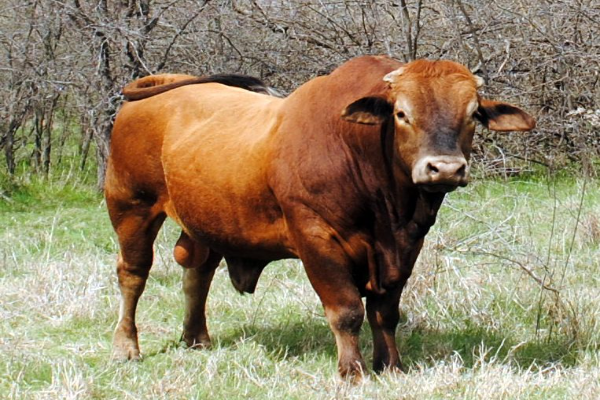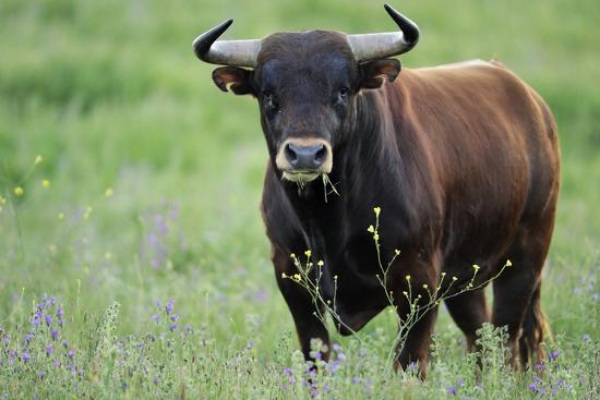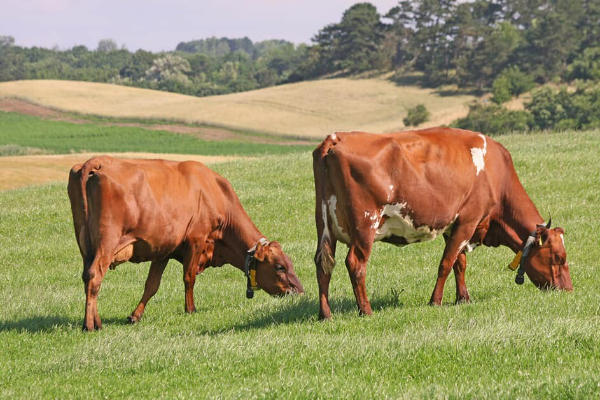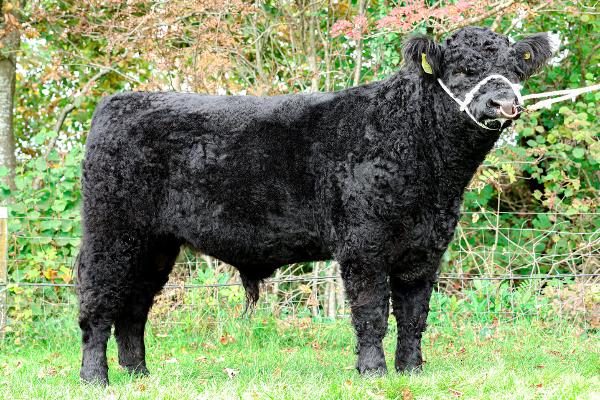Alentejana Cattle

The Alentejana Cattle that historically named as Raça Bovina Alentejana, also known as Transtagana, is found in the region of Alentejo, Portugal. They are found almost exclusively in the Northern Portuguese districts of Viseu, Braga, Aveiro, and Porto.
Used for meat production and as a draft animal, it is similar to the Retinta breed found in Spain. They are light brown; although the bulls may become a little darker than the cows. Both bulls and cows have horns. The Alentejana is golden red with long horns. Their horns are large which are wide and are directed forward, first down and then up. They have pretty strong legs, and their hind legs are very muscular. The Mertolenga and the Southern Crioulo from Brazil originated from this breed.
The environmental factors that are the origin of Alentejo cattle are of a different order, although some, such as the climate, have a more direct contribution to the type of animal that exists today.
This cattle has the Protected Geographical Status of DOC (Denominação de Origem Controlada) from the European Commission.
What Is The History Of Alentejana Cattle?

The Alentejana was, for centuries where it originated, the most important working breed on the plains and in the hills of Alentejo a south-central region of Portugal.
The Alentejana’s original morphology was determined by an unbalanced diet and working for long periods in a hot, dry climate. However, starting in the mid 1900s, mechanization of farm labor slowly took over and selection for beef became primary. Thus, their production management was modified to achieve a better shape and carcass and cutting yields. When this wasn’t satisfactory, breeders tried increased, and sometimes indiscriminate, crossbreeding with imported exotic breeds (including the Salers and Charolais). Eventually these practices led to purebred Alentejana numbers declining.
In reaction to this, the Alentejana herdbook was finally established by 1970. Over time, spurred by greater demand from consumers, breeders of all the native Portuguese breeds started working to curb the genetic regression occurring in their herds. National and community programs which promoted conservation and the sustainable use of animal genetic resources were implemented and producers began marketing their beef as Protected Designation of Origin (PDO) products.
By 2003, 47% of all PDO beef in Portugal was from the Alentejana. However, the recovery of breed purity has created the problem of reduced genetic diversity which breeders today are now addressing.
What Are The Characteristics Of Alentejana Cattle?
- The Alentejana Cattle were used to work in the recent past.
- They are Rustic, energetic, and gentle animals.
- The Alentejana Cattle are medium to big in size.
- They have a broad head with a somewhat convex (spherical) profile.
- This breed has a long body with a deep chest.
- They have long, widespread horns with upturned points.
- They have rather short legs.
- Their Arm and forearm are strong.
- Their coat color is red - from blonde to mahogany brown, unicolored or pied.
- Withers of the breed medium in width and slightly protruding.
- The tail of the cattle is fine, falling in a regular smooth curve from its insertion and finished a tassel and hairy.
- Their shoulders are long and wide.
- Nails of the cattle are well shaped, solid and smooth, whose color ranges from amber to fiery.
What Is The Weight Of Alentejana Cattle?
 The Alentejana cattle showed a marked increase in the adult
weight between the 70s and 90s of the 20th century, which currently reaches
average values of the order of 600-700 kg in cows and 900-1100 kg in bulls. The
bulls of the breed can reach a height of about 134 cm, and the cows about 123
cm.
The Alentejana cattle showed a marked increase in the adult
weight between the 70s and 90s of the 20th century, which currently reaches
average values of the order of 600-700 kg in cows and 900-1100 kg in bulls. The
bulls of the breed can reach a height of about 134 cm, and the cows about 123
cm.
Sources
https://afs.okstate.edu
https://autoctones.ruralbit.com
https://en.wikipedia.org
https://livestockoftheworld.com
https://krankykids.com
http://www.bovinoalentejano.pt

Written by
Researcher Ghost Writer
EditorBreedsMore
IllnessesMore
Forage cropsMore
![]() Патологическая физиология голодания Arina TARAN
Патологическая физиология голодания Arina TARAN![]() Дефицит фосфора (гипофосфатемия) Hipofosfatemi Arina TARAN
Дефицит фосфора (гипофосфатемия) Hipofosfatemi Arina TARAN![]() Какие бывают кормораздатчики для ферм КРС? Irina Makarova
Какие бывают кормораздатчики для ферм КРС? Irina Makarova![]() Кормушки для овец Diana Myakisheva
Кормушки для овец Diana Myakisheva![]() Питание домашних коз: что едят, виды корма и правила кормления Alina Arslantürk
Питание домашних коз: что едят, виды корма и правила кормления Alina Arslantürk![]() Важность минералов питании сельскохозяйственных животных Irina Makarova
Важность минералов питании сельскохозяйственных животных Irina Makarova



















